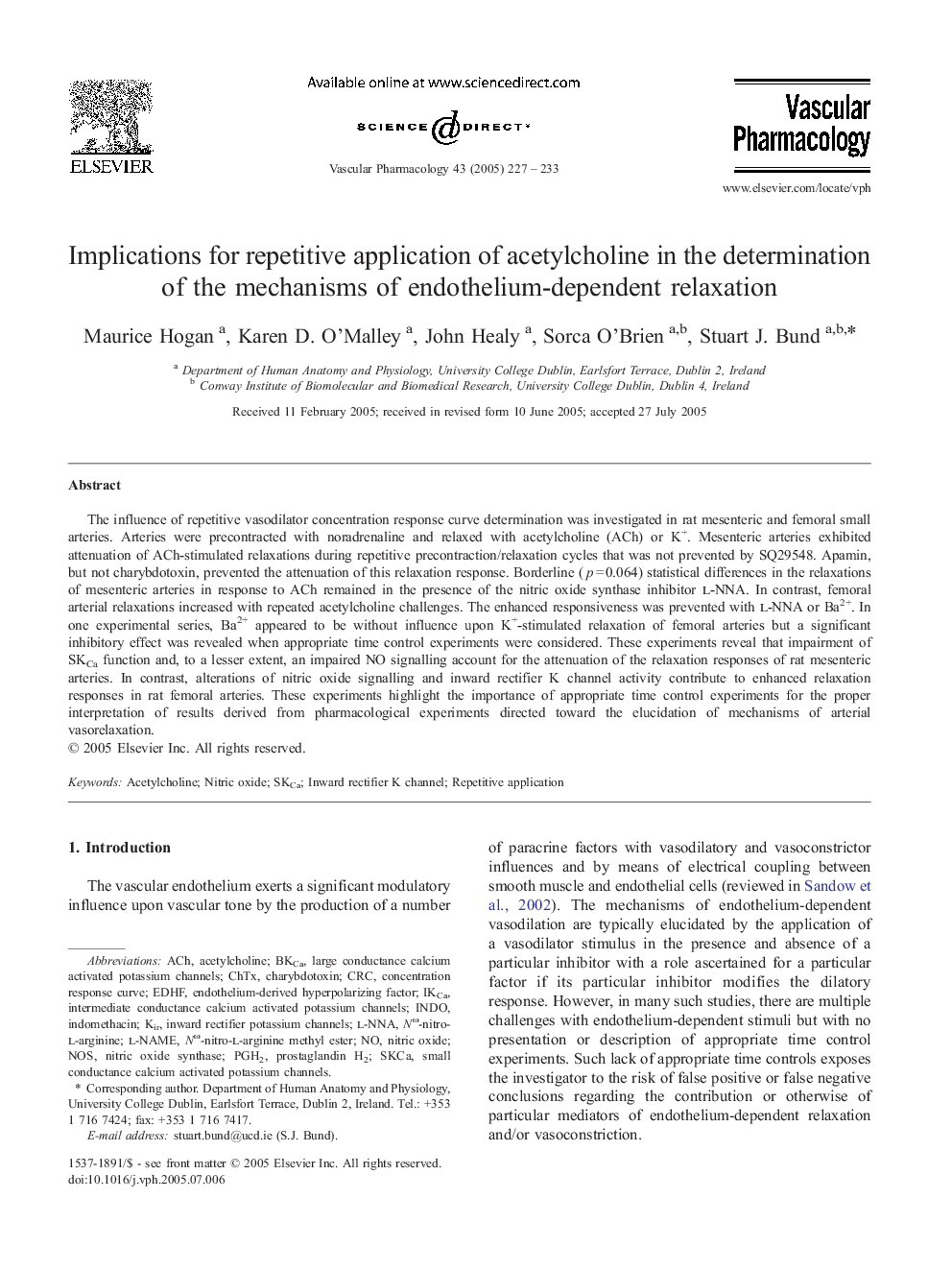| Article ID | Journal | Published Year | Pages | File Type |
|---|---|---|---|---|
| 9020846 | Vascular Pharmacology | 2005 | 7 Pages |
Abstract
The influence of repetitive vasodilator concentration response curve determination was investigated in rat mesenteric and femoral small arteries. Arteries were precontracted with noradrenaline and relaxed with acetylcholine (ACh) or K+. Mesenteric arteries exhibited attenuation of ACh-stimulated relaxations during repetitive precontraction/relaxation cycles that was not prevented by SQ29548. Apamin, but not charybdotoxin, prevented the attenuation of this relaxation response. Borderline (p = 0.064) statistical differences in the relaxations of mesenteric arteries in response to ACh remained in the presence of the nitric oxide synthase inhibitor l-NNA. In contrast, femoral arterial relaxations increased with repeated acetylcholine challenges. The enhanced responsiveness was prevented with l-NNA or Ba2+. In one experimental series, Ba2+ appeared to be without influence upon K+-stimulated relaxation of femoral arteries but a significant inhibitory effect was revealed when appropriate time control experiments were considered. These experiments reveal that impairment of SKCa function and, to a lesser extent, an impaired NO signalling account for the attenuation of the relaxation responses of rat mesenteric arteries. In contrast, alterations of nitric oxide signalling and inward rectifier K channel activity contribute to enhanced relaxation responses in rat femoral arteries. These experiments highlight the importance of appropriate time control experiments for the proper interpretation of results derived from pharmacological experiments directed toward the elucidation of mechanisms of arterial vasorelaxation.
Keywords
Related Topics
Health Sciences
Medicine and Dentistry
Cardiology and Cardiovascular Medicine
Authors
Maurice Hogan, Karen D. O'Malley, John Healy, Sorca O'Brien, Stuart J. Bund,
